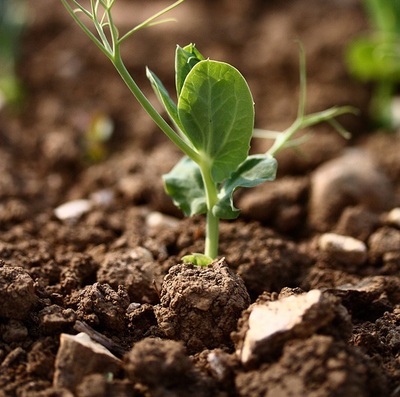The research focused on finding a mechanism behind the negative plant-soil feedback. So what is this? It is the mechanism that the soil becomes a less suitable environment for plants, and that the plants are the very reason that their own environment becomes more hostile! Reasons such as a nutrient shortage or soil pathogens formed part of the answer. It was also known that the dead leaves and plant material that accumulate on top of the soil release toxic compounds when decomposed. But these phyto-toxins are rapidly 'digested' by soil microbes.
When dead leaves are decomposed, fragments of the cellular DNA come free in the environment. Mazzoleni and colleagues have shown that these DNA fragments actually hamper the growth of plants themselves and individuals from their own species : the plants own DNA-fragments act as a toxin. Moreover, it makes the plant also more vulnerable to microbes.
More tests revealed that this self-toxicity mechanism not only affects plants, but also bacteria, fungi, algae, protozoa and insects. The closer the relationship between the fragmented DNA and the 'receiver', the more toxic the DNA-fragments are.
The finding is important: it may help us answer as of yet unanswered ecological questions. It also opens up new ways of fighting weeds and soil pathogens in agricultural fields, hereby increasing the crop yield. It may even lead to scientists finding new cures for human diseases.
Inhibitory effect of extracellular DNA in plant-soil negative feedback: from ecological models to a general biological law
Date, time and place: Thursday 26 February 16:00 hours in Ruppert-119
Speaker: Stefano Mazzoleni, Professor of Applied Ecology and Modelling
Affiliation: Laboratory of applied ecology and systems dynamics, University of Naples “Federico II”
NO ENTRANCE FEE
Theoretical modelling work demonstrated that the build-up of plant-soil negative feedback could explain both gradients of species diversity and spatial organization of vegetation.
Autotoxicity has been proposed as a possible mechanism of such negative feedback, relating it to the release of inhibitory factors by litter decomposition and their removal dynamics by water.
The hypothesis that autotoxicity effect could be due to extracellular DNA, advanced on the basis of theoretical reasoning, has been in-depth investigated by integrating ecological, phytochemical, and biomolecular studies, including a throughput metabolomic characterization by nuclear magnetic resonance (NMR) methods of a large set of plant litter materials at different decomposition stages.
Results indicated a general occurrence of species-specific litter toxicity related to the accumulation of extracellular self-DNA fragments during the decomposition process which could also explain observed effects of plant–soil negative feedback, revealing a new unexpected function of DNA at the ecosystem level and its possible role in self-recognition processes.
Moreover, further tests on different species demonstrated the general occurrence of inhibition by conspecific extracellular DNA in organisms other than plants, including bacteria, fungi, algae, protozoa and insects. The involved mechanisms of such general inhibitory phenomenon definitely require future investigation at cellular and molecular levels.
This discovery, while bearing general implications for life sciences, also suggests an unprecedented use of DNA for biological control, opening new scenarios for pharmacological applications in both agriculture and medicine.
Links to the three articles
Article 1: Inhibitory and toxic effects of extracellular self-DNA in litter: a mechanism for negative plant-soil feedbacks? (Mazzoleni et al., 2014; New Phythologist)
Article 2: Inhibitory effects of extracellular self-DNA: a general biological process? (Mazzoleni et al., 2014; New Phytologist)
Article 3: New perspectives on the use of nuclei acids in pharmacological applications: inhibitory action of extracellular self-DNA in biological systems. (Mazzoleni et al., 2014; Phytochemistry Reviews)
Blog entry by Ineke Roeling - PhD student



 RSS Feed
RSS Feed
